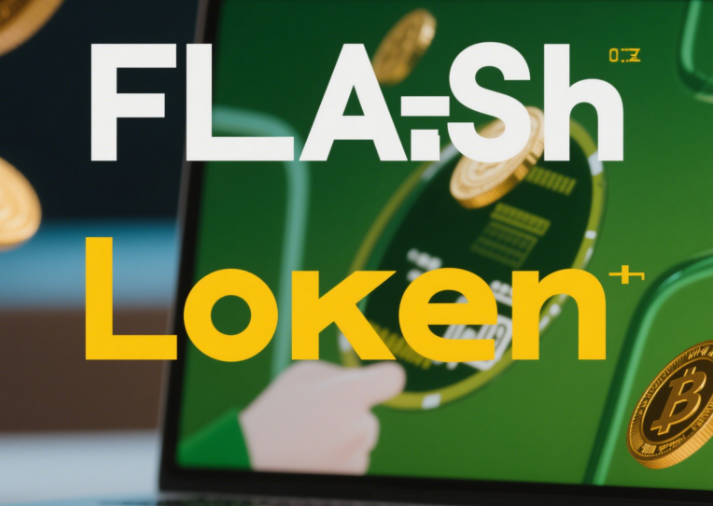Flash loans have emerged as one of the most transformative innovations in decentralized finance (DeFi), enabling users to borrow large sums of cryptocurrency without collateral—provided the loan is repaid within the same blockchain transaction. This groundbreaking technology has reshaped financial strategies, from arbitrage opportunities to protocol audits, while posing unique risks. Below, we delve into how flash loans work, their real-world applications, and why they’re a cornerstone of DeFi’s evolution.
How Flash Loans Work
Flash loans operate on a simple yet revolutionary principle: borrow, execute, repay—all within a single atomic transaction. Here’s the breakdown:
- Borrow: Users request funds from a liquidity pool (e.g., Aave, Compound) via a smart contract.
- Execute: The funds are used for a specific purpose (e.g., arbitrage, liquidity provision).
- Repay: The loan plus fees must be returned before the transaction completes. If repayment fails, the entire transaction is reverted, ensuring no loss for the lender.
This process is made possible by smart contracts, which enforce the “all-or-nothing” rule. For example, Aave’s flash loan feature allows borrowers to access funds instantly, with fees typically around 0.09% of the loan amount .
Key Advantages of Flash Loans
1. No Collateral Required
Unlike traditional loans, flash loans demand no upfront collateral. This democratizes access to capital, allowing even small traders to execute high-value strategies. For instance, a user with limited funds can borrow $1 million to exploit a price discrepancy between exchanges, repay the loan, and keep the profit .
2. Lightning-Fast Execution
Transactions occur within a single blockchain block (seconds to minutes), minimizing exposure to market volatility. This speed is critical for arbitrage, where delays could erase profit margins.
3. Low Costs
Fees are minimal compared to traditional finance. For example, borrowing $1 million on Aave costs just $900, making flash loans ideal for short-term, high-frequency trades .
4. Versatile Use Cases
Flash loans power a range of DeFi activities:
- Arbitrage: Exploit price differences across DEXes (e.g., Uniswap, SushiSwap).
- Liquidity Provision: Stabilize pools or bootstrap new protocols.
- Debt Repayment: Avoid liquidation by repaying loans during market downturns.
- Protocol Audits: Test smart contracts for vulnerabilities using simulated attacks .

Risks and Challenges
While flash loans offer unprecedented opportunities, they also carry significant risks:
1. Price Manipulation
Attackers can manipulate token prices during a flash loan. For example, in 2020, hackers exploited bZx’s reliance on Uniswap’s price oracles to artificially inflate sUSD prices, stealing $803,040 . Similar attacks targeting PancakeBunny in 2021 resulted in $45 million losses .
2. Smart Contract Vulnerabilities
Bugs in loan protocols can lead to exploits. In 2020, bZx’s flash loan feature was hacked twice within days, costing the platform over $1 million . Audits and security measures like reentrancy guards are critical to mitigate these risks .
3. Market Volatility
Sudden price swings during a transaction can invalidate repayment, causing the loan to fail. Traders must account for slippage and use tools like Chainlink oracles for accurate pricing .
Real-World Examples
1. Arbitrage on Ethereum
A trader borrows 1,000 ETH from Aave, swaps it for USDC on Uniswap, and sells USDC for ETH on SushiSwap at a higher price. After repaying the loan, the profit is pocketed—all within seconds .
2. Protocol Exploits
In 2025, attackers used flash loans to manipulate BTB’s price oracle on BNB Chain, borrowing 100,000 BUSD to inflate BTB’s value by 400x. They then sold BTB for a $4,863 profit .
3. Liquidity Mining
Users borrow tokens to provide liquidity in yield farming pools, earning rewards before repaying the loan. This strategy maximizes returns but requires precise timing .
The Future of Flash Loans
As DeFi evolves, flash loans are integrating with new technologies:
- Layer 2 Scaling: Platforms like Polygon and Optimism reduce gas fees, making flash loans more accessible .
- Cross-Chain Bridges: Flash loans are enabling seamless asset transfers across blockchains, expanding arbitrage opportunities .
- AI-Driven Strategies: Projects like Flash Protocol are leveraging AI to optimize flash loan execution, reducing risks and improving profitability .
However, regulatory scrutiny is rising. While DeFi remains largely unregulated, governments may impose restrictions on flash loans to prevent market manipulation .
Conclusion
Flash loans have redefined what’s possible in DeFi, offering instant, collateral-free access to capital for traders and developers alike. While they come with risks, their potential to democratize finance and drive innovation is undeniable.
Stay ahead of the curve with Bitora’s DeFi insights— explore our platform for real-time market data, expert analysis, and secure trading tools.









Leave A Reply